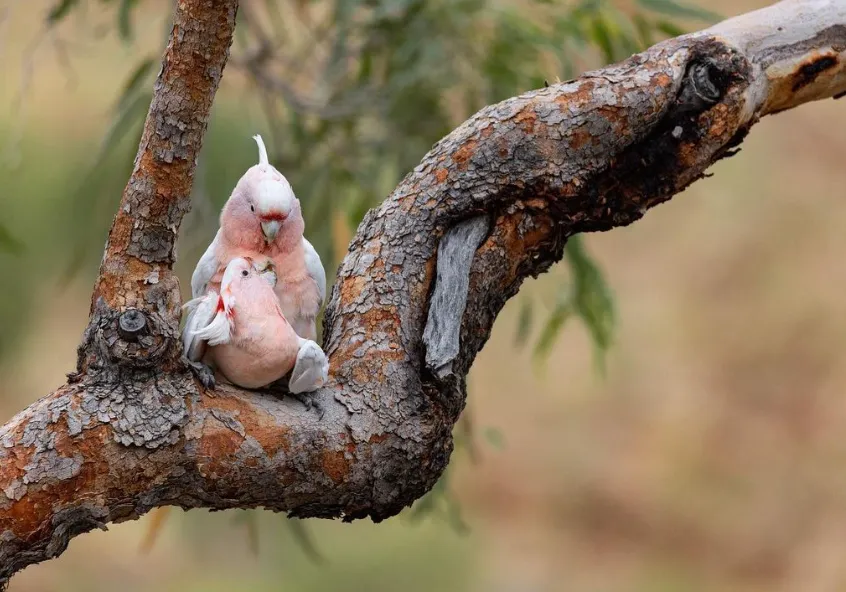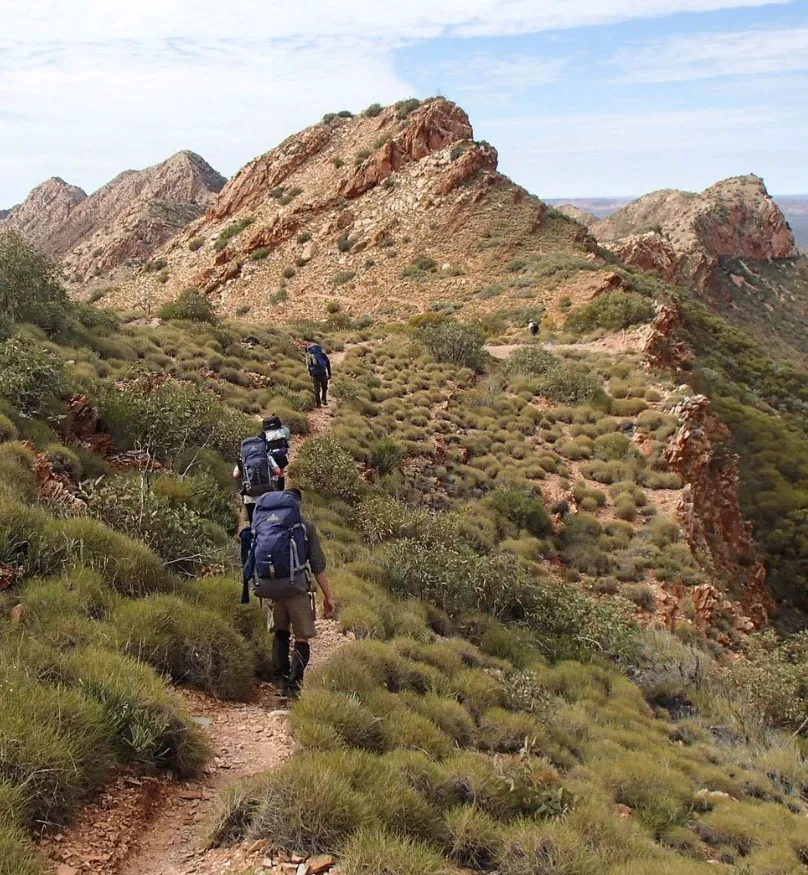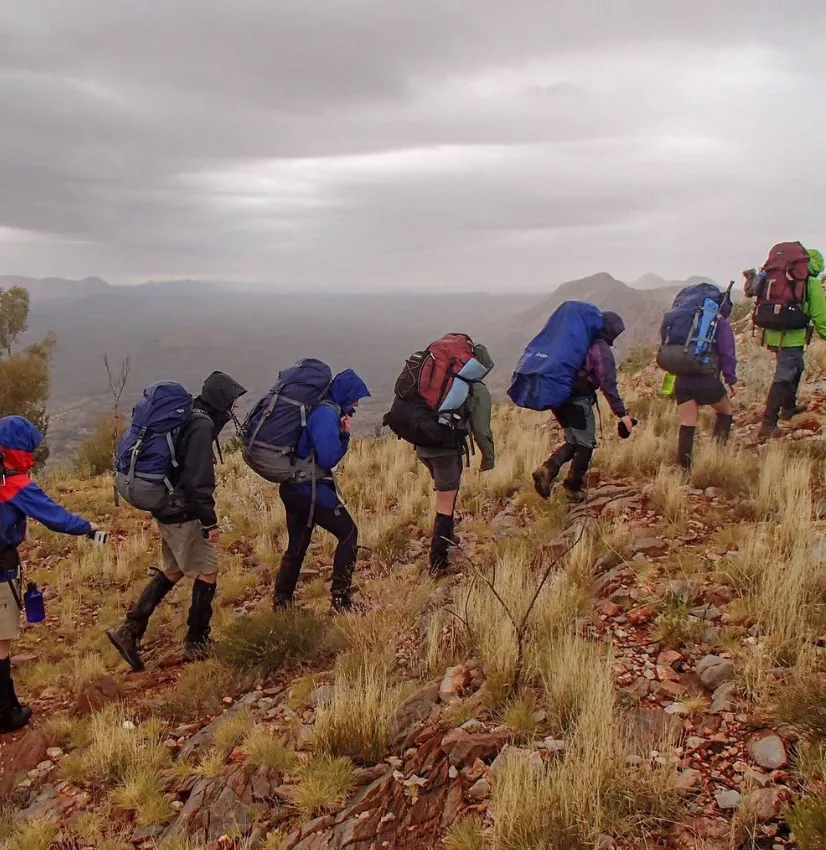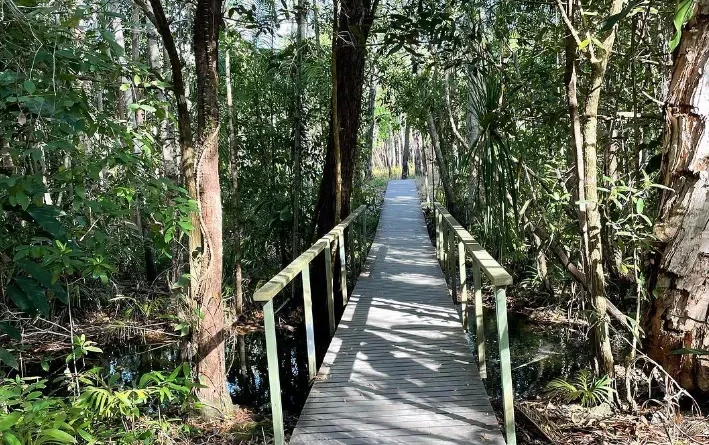Larapinta Trail: The Best Time of Year to Embark on Your Trek
The Larapinta Trail, located at the heart of Central Australia, is a magnificent and demanding walk. It traverses West MacDonnell Ranges for about 223 kilometres, offering hikers with awe-inspiring gorges, breathtaking landscapes and deep cultural heritage. However, when should it be done to get the most out of this epic experience? The answer largely relies on what climate you like, how hard you want it physically to be and what sort of trekking experience you would like to have in general. In this guide, we will look into different periods throughout the year that one can choose from while planning their Larapinta Trail tour.
Larapinta Trail in each season
Summer (December to February)
During summer season in central Australia temperatures tend to rise and make Larapinta trail even more challenging. Daytime temperatures have been known to climb as high as 35°C (95°F), sometimes reaching the high 40’s in some locations. Due to extreme heat hydration and sun protection are essential things when walking this part of the trail. While this period sees few trekkers, careful arrangements must be made due to adverse conditions.
Highlights of Summer Trekking

Hydration: Plan ahead by ensuring extra water containers as well as a full water bladder for hydration purposes since you might go thirsty at certain points along your journey. For instance, there are water tanks and creek beds which play a significant role in sustaining life along the trail but they may not always be available.
Heat Protection: Dress lightly in breathable clothes together with a wide-brimmed hat so as to avoid getting sunburned or attacked by wind burns. Sunglasses and sunscreen must also find a way into your backpacks. Starting early morning hikes and resting during hottest hours of the day helps manage rising body temperature.
However challenging it may appear summer offers another perspective on its fantastic landscape that should not be missed. Heat brings out lush colours in vegetation whilst it enhances the starkness of the red soil and jagged mountain ranges. Nevertheless, trekking in such extreme temperatures is physically demanding and more suitable for experienced hikers who are used to harsh desert conditions.
Autumn (March to May)
One of the best times for Larapinta Trail hiking is autumn. This means that temperatures range from 20°C to 30°C making the journey a pleasant one. The cooler temperatures also provide respite from the scorching summers making Larapinta trail even more accessible.
Highlights of Autumn Trekking

Comfortable Weather: Since it is not too hot but rather relatively cool you can take longer treks without fear of dehydration hence making autumn a good time to hike through tough sections like Razorback Ridge or those with steep ascents around Glen Helen Gorge.
Beautiful Scenery: Clear skies and vibrant colors often define the landscape during this season. For example, panoramic views at places like Euro Ridge and serene waterholes including Ellery Creek Big Hole look quite amazing in autumn light.
Additionally, there are fewer people during the fall months which make hiking more peaceful. It’s an ideal time for both seasoned hikers and beginners on long distance trails providing a nice weather balance combined with fascinating landscapes for walking through.
Winter (June to August)
In Central Australia winter season is marked by chilly mornings followed by moderate sunny days. These daytime temperatures usually range between 10°C – 20°C offering ideal hiking conditions. Cooler airs in winter allow comfortable hiking as they minimize any chance of heat-related problems among other things that affect body temperature throughout your walk; therefore, you can hike well.
Highlights of Winter Trekking

Ideal Hiking Conditions: The cooler temperatures are ideal for undertaking the demanding sections of the trail without excessive heat. However, winter conditions can make the hike more enjoyable and manageable, especially when walking through rocky gullies and deep gorges.
Clear Skies & Stunning Views: Clear, blue skies often come with winter, making visibility better and enhancing panoramic views from high points along the trail even more breathtaking. In early mornings and evenings, it tends to get quite cold; hence, carrying warm layers for the evenings is necessary.
However, it’s important to be prepared for colder temperatures during winter trekking especially at night. Therefore appropriate camping gear such as quality sleeping bag and thermal clothing should be brought along.
Spring (September to November)
Another great time to walk on Larapinta Trail is spring. Comfortable trekking conditions will accompany you as temperatures rise, ranging between 15°C and 30°C(59°F-86°F), coupled with blooming wildflowers and lush vegetation.
Highlights of Spring Trekking:
Mild Temperatures: As a result, hikers can enjoy some relief from summer’s blazing sun by experiencing mild to moderate temperatures in spring that help them cover different terrains of this path while enjoying its scenic beauty. It is less extreme than summer weather making it a better balance for hiking.
Flora And Fauna: Besides adding extra touch on already stunning landscape, this season becomes excellent for those who wish to see everything on full stretch through increased flowers all over the path. This part of year is very popular among people who want to explore this area in its prime state.
Additionally, spring attracts more people so you may come across other trekkers during your journey. At the same time, local tourists and international visitors choose this season thus advance booking sites where one can erect his tent are advisable since they fill up quickly
Seasonal Considerations

Each Larapinta Trail season presents distinct opportunities and challenges. Knowing these seasonal differences can help you plan for your hike and get the most out of your experience.
Seasonal Factors to Keep in Mind
Wildlife and Flora: The trail has different flora and fauna at different times of the year. In spring, wildflowers are in full bloom while autumn offers better weather conditions to watch wildlife. Both summer and winter have their own unique environmental attributes; summers are characterized by bright desert colouration, whereas winter is associated with clear skylines.
Trail Accessibility: The condition of the trail changes as seasons come and go. For example, summer may be too hot for some parts of the trail while in winter, it may be colder than expected. Fall and spring months usually offer the best hiking weather stability.
There are plenty of signs on Larapinta Trail so that you will never get lost from this route. Furthermore, Larapinta Trail Trek Support provides guided options as well as logistical assistance so that your journey becomes more comfortable.
By understanding these seasonal dynamics and preparing accordingly, one can choose the perfect time to start this Australian adventure walk. Whether it is a lonely summer or a mild autumn, the Larapinta Track guarantees an unforgettable trip all year round.
Tips for Planning

Gear and Clothing
The right gear and clothing can make a big difference on the Larapinta Trail trek. It’s imperative to prepare for each season to ensure one’s safety and comfort.
Footwear: Get top-notch, long-lasting hiking boots with good ankle support and traction. The terrain can be rough, so proper footwear is necessary to avoid injuries and give balance.
Day Pack: A day pack should be lightweight yet roomy enough to carry essentials like water, food, first-aid kit, additional layers among other things. For longer hikes, you will require a bigger backpack that could hold up your camping equipment as well as food drops.
Clothing: Layering is important since the temperature keeps changing. On hot days, light base layers that wick moisture are perfect, while on colder days, one requires an insulating layer. Remember a broad-brimmed hat plus sunglasses for sun protection alongside a rain jacket in case of unexpected showers.
Sleeping Gear: You need excellent sleeping gear tailored according to the season’s temperatures; otherwise, it may lead to sleepless nights in winter hikes. This means you need a sleeping bag that has a lower temperature rating together with an insulated tent during the cold nights.
Season-Specific Recommendations

Summer: In summer time essential attire includes being dressed in light breathable fabrics characterized by plenty of sunscreen. This calls for wide brimmed hats or clothes capable of protecting one from UV rays of the sun. Carrying adequate water supply coupled with depend able water filtration system remains paramount here.
Autumn and Spring: Layers help you adjust to different temperature changes. While a fleece or down jacket comes handy during chilly mornings as well as evenings when it become cooler outside. Wearing waterproof clothes is necessary just in case it rains.
Winter: Thermal clothing is must-have such as thermal layers along with warm sleeping bag which are ideal for cold weather conditions.Temperatures drop at night during winter so gloves, beanies and insulated layers will enhance warmth.
Permits and Regulations

It’s important to know the necessary permits and regulations prior to embarking on the Larapinta Trail for smooth and legal trek. The trail passes through several national parks including West MacDonnell Ranges and are regulated by specific guidelines aimed at conserving the environment and making hiking more enjoyable.
Permits Required
Walking Permits: All hikers must have walking permit before commencing their journey. These permits can be purchased from Parks and Wildlife Commission in Northern Territory. Permits are used to manage the trail’s usage plus assisting in its conservation purposes.
Camping Fees: A fee is charged if you intend camping along with this trail; it facilitates maintenance of the path as well as its facilities. You are advised to make an early booking for camping sites mostly during high season treks like autumn or spring time.
Regulations to Follow
Campfire Restrictions: Campfires are not allowed on the trek because of bushfire risk. If you want to cook your food outdoors then use portable stoves instead.
Leave No Trace: Observance of “Leave No Trace” principles, which require visitors to pack out all rubbish, do not pick up vegetation or disturb wildlife, use designated toilet facilities or carry portable toilets while hiking.
Wildlife Interaction: Do not get near wildlife particularly by giving them foodstuff. Keep campsites clean by storing food supplies properly away from animals that can scavenge around them.
Conclusion
Throughout the year, the Larapinta Trail is an amazing walk that offers different experiences. For each season, there are different things to be faced as well as gains from it: summer’s scorching heat and winter’s snowfall. If you choose your preferred season for hiking, prepare for it adequately by dressing appropriately and having enough gear and permits; hence, you will enjoy every bit of the landscape’s magnificence and also experience some cultural values that can only be found on this trail. Future travellers should plan their trips while thinking about watching over Euro Ridge or Ellery Creek Big Hole or having an adventure at Razorback Ridge if they want to have a fun-filled, unforgettable journey.
Frequently Asked Questions
What is the best time to hike the Larapinta Trail?
The best period to hike is from April through September when temperatures are milder and more pleasant.
How do I get ready for summer hiking trips?
For summer, wear light clothes, use sunblock, take extra water with you and walk early in the morning or late evening to avoid high temperatures.
What types of animals might I expect to see on the track?
There might be kangaroos, dingoes, and some birds. Late spring and autumn are generally the best times for seeing wildlife.
How should I prepare myself for winter trekking?
Clothing that keeps heat close to your body, a sleeping bag that retains heat well and an awareness of how cold it can become at night would all be useful things to have along.
Do I need permits for Larapinta Trail?
You are required to get a walking permit as well as pre-book campsites here.
